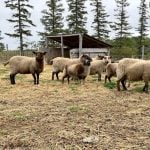Achieving optimum seed depth is a critical challenge faced by winter cereal growers.
The fall-seeded crops require the proper conditions to protect them from freezing winter temperatures. And seeding at the right depth to avoid winterkill is probably most essential, according to Saskatchewan consultant agrologist Larry Koturbash.
“This can be a major problem faced by producers,” he told winter cereal growers during the Crop Production Show last week in Saskatoon.
Ideal depth
The ideal seeding depth for winter cereal crops is between one-half to one inch, Koturbash said.
Read Also

VIDEO: Agritechnica Day 4: Robots and more robots, Nexat loves Canada and the trouble with tariffs
Agritechnica Day 4: Robots and more robots, Nexat loves Canada and the trouble with tariffs.
“At two inches or more down in the ground, they likely won’t survive the winter.”
Seeds planted at one and a half or two inches may survive the winter, but will mature late and won’t produce high yielding crops, he said.
The right seeding system, a method which plants at an accurate and consistent depth, is also necessary, since variations within rows and fields lead to varied maturing rates, Koturbash said.
He offered other advice for winter cereal farmers:
- Have the ground ready for planting, which normally occurs between Aug. 25 and Sept. 15.
- Select a preceding crop with an early maturing date to ensure it is off in time to plant winter wheat.
- Use aeration and grain drying systems to speed harvest.
There are between 600 and 700 winter cereal producers in Saskatchewan farming about 100,000 acres per year to winter crops.














